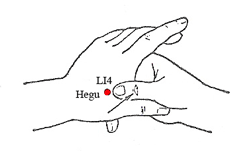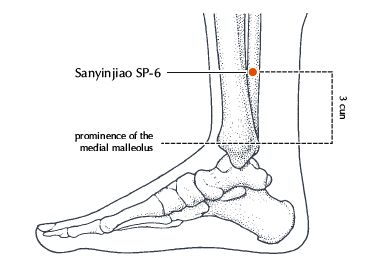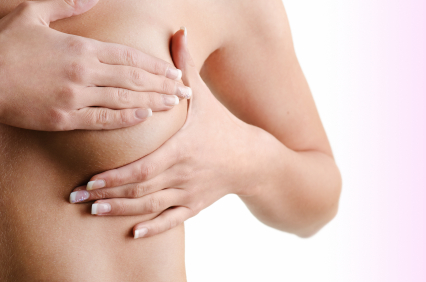Being overdue for delivery is a common situation for many first-time mothers. This experience can become increasingly painful and uncomfortable as more time passes, and many women employ other methods of inducing childbirth. One of these methods is acupressure.
Acupressure focuses on the body’s natural pressure points to induce labor, which are said to be the areas where most energy is stored away. However, as with other natural means of inducing labor, this method only takes effect when the cervix is ripe and the body is ready for delivery. Instructions and tips on practicing acupressure are detailed below.
Most Common Pressure Points to Induce Labor
Stimulating pressure points with maternity acupressure has been proven safe and effective as a means of inducing labor. This method works because pressing certain points on your body stimulates your uterus and causes it to contract. Moreover, it not only encourages delivery but also eases the process of giving birth.There are three general situations you may find yourself in that can be remedied by maternity acupressure.
- The most common one would be when you have gone past your due date but have not yet entered labor.
- The second is when you are already in labor, but need to strengthen your contractions in order to push your baby out.
- Lastly, you can also use acupressure when your amniotic fluid has already broken, but you still have not entered labor.
Warning: Although using maternity acupressure can be very helpful, be certain that you are absolutely ready to deliver your baby. Never employ the procedure before you have completed all stages of pregnancy and it is safe for your baby to come out of your womb. The following are some acupressure procedures you can use when the time comes for you to enter labor:
1. Hegu (LI 4)
 Pinch the webbed skin in between your thumb and index finger. The pressure you apply should be towards the center of your hand. After a while, do the same for your other hand. Keep on switching between your two hands every 30 to 60 seconds, rubbing your fingers in a circular motion.
Pinch the webbed skin in between your thumb and index finger. The pressure you apply should be towards the center of your hand. After a while, do the same for your other hand. Keep on switching between your two hands every 30 to 60 seconds, rubbing your fingers in a circular motion.
When you feel a contraction beginning, stop applying pressure and only resume when it has passed. You can try using a stopwatch to take note of the duration and frequency of your contractions. When they start occurring at regular intervals, you may be ready for labor.
2. San-yin-jiao (SP 6)
 You can use this method on one or both of your legs at the same time. Take hold of your leg and position your hand in such a way that your little finger is directly above your ankle bone. Then, look for the san-yin-jiao pressure point, which is on your lateral tibia. If you are holding your ankles correctly, this pressure point should be somewhere below your index finger.
You can use this method on one or both of your legs at the same time. Take hold of your leg and position your hand in such a way that your little finger is directly above your ankle bone. Then, look for the san-yin-jiao pressure point, which is on your lateral tibia. If you are holding your ankles correctly, this pressure point should be somewhere below your index finger.
Firmly press your thumb on the pressure point, which may feel sore when you touch it. Rub the area in small circles and continue doing so for several minutes. This action will effectively stimulate your contractions. When they do start, you can stop applying pressure on your ankles.
The following video shows more pressure points to induce labor such as UB67, UB60 and Kl 1. Watch to learn how to find those pressure points and when to use them in different situations for best results:
5 More Effective Natural Remedies to Induce Labor
1. Walking
 The way your hips sway when you walk can already coax your baby to move down into your pelvis. In turn, the pressure your baby applies on your pelvic region can stimulate your cervix, causing it to grow thinner to prepare for labor. If you are already feeling your contractions, walking can help your labor progress more quickly.
The way your hips sway when you walk can already coax your baby to move down into your pelvis. In turn, the pressure your baby applies on your pelvic region can stimulate your cervix, causing it to grow thinner to prepare for labor. If you are already feeling your contractions, walking can help your labor progress more quickly.
At the very least, if walking around still does not help you enter into labor, it will help you shape up and prepare your body for when you finally deliver your baby. As long as you do not overwork yourself, walking around will actually do you good as your labor approaches.
2. Evening Primrose Oil
 Evening primrose oil is an herb that comes in several forms and causes your cervix to grow thinner and more dilated in preparation for labor. You can ingest it orally as a capsule, insert the capsule into your vagina, or apply it as an extract over your cervix. Just be sure to consult your doctor first before using it, as it may worsen some conditions like placenta previa.
Evening primrose oil is an herb that comes in several forms and causes your cervix to grow thinner and more dilated in preparation for labor. You can ingest it orally as a capsule, insert the capsule into your vagina, or apply it as an extract over your cervix. Just be sure to consult your doctor first before using it, as it may worsen some conditions like placenta previa.
Other herbs, such as red raspberry leaf, are also used to induce labor. However, unless you seek help from a medical professional, it is not advisable for you to use them
3. Castor Oil
 This vegetable oil is a laxative that stimulates your bowel by triggering spasms in your intestines. When this happens, your uterus will be irritated and also start contracting. Although this method may induce labor, it is also likely to cause diarrhea, which is not a good thing when you are almost ready to give birth. If you plan on using this oil, make sure to consult your doctor first.
This vegetable oil is a laxative that stimulates your bowel by triggering spasms in your intestines. When this happens, your uterus will be irritated and also start contracting. Although this method may induce labor, it is also likely to cause diarrhea, which is not a good thing when you are almost ready to give birth. If you plan on using this oil, make sure to consult your doctor first.
4. Nipple Stimulation
 Massaging and twisting your nipples regularly causes your body to release a hormone called oxytocin. This hormone is responsible for triggering your contractions. However, this method is not very popular among doctors and medical experts because the contractions you experience because of them can be painful and last for long durations. This is a risk for your baby, as it can lower his heart rate significantly. Thus, unless you perform this method while being closely monitored by a medical expert, it is advisable for you to stay away from touching your nipples altogether.
Massaging and twisting your nipples regularly causes your body to release a hormone called oxytocin. This hormone is responsible for triggering your contractions. However, this method is not very popular among doctors and medical experts because the contractions you experience because of them can be painful and last for long durations. This is a risk for your baby, as it can lower his heart rate significantly. Thus, unless you perform this method while being closely monitored by a medical expert, it is advisable for you to stay away from touching your nipples altogether.
5. Pineapple
 Eating pineapples can increase your levels of bromelain, which is an enzyme that helps to soften your cervix. It will help stimulate your stomach muscles and uterus, as well, which can ultimately trigger your contractions for labor.
Eating pineapples can increase your levels of bromelain, which is an enzyme that helps to soften your cervix. It will help stimulate your stomach muscles and uterus, as well, which can ultimately trigger your contractions for labor.

